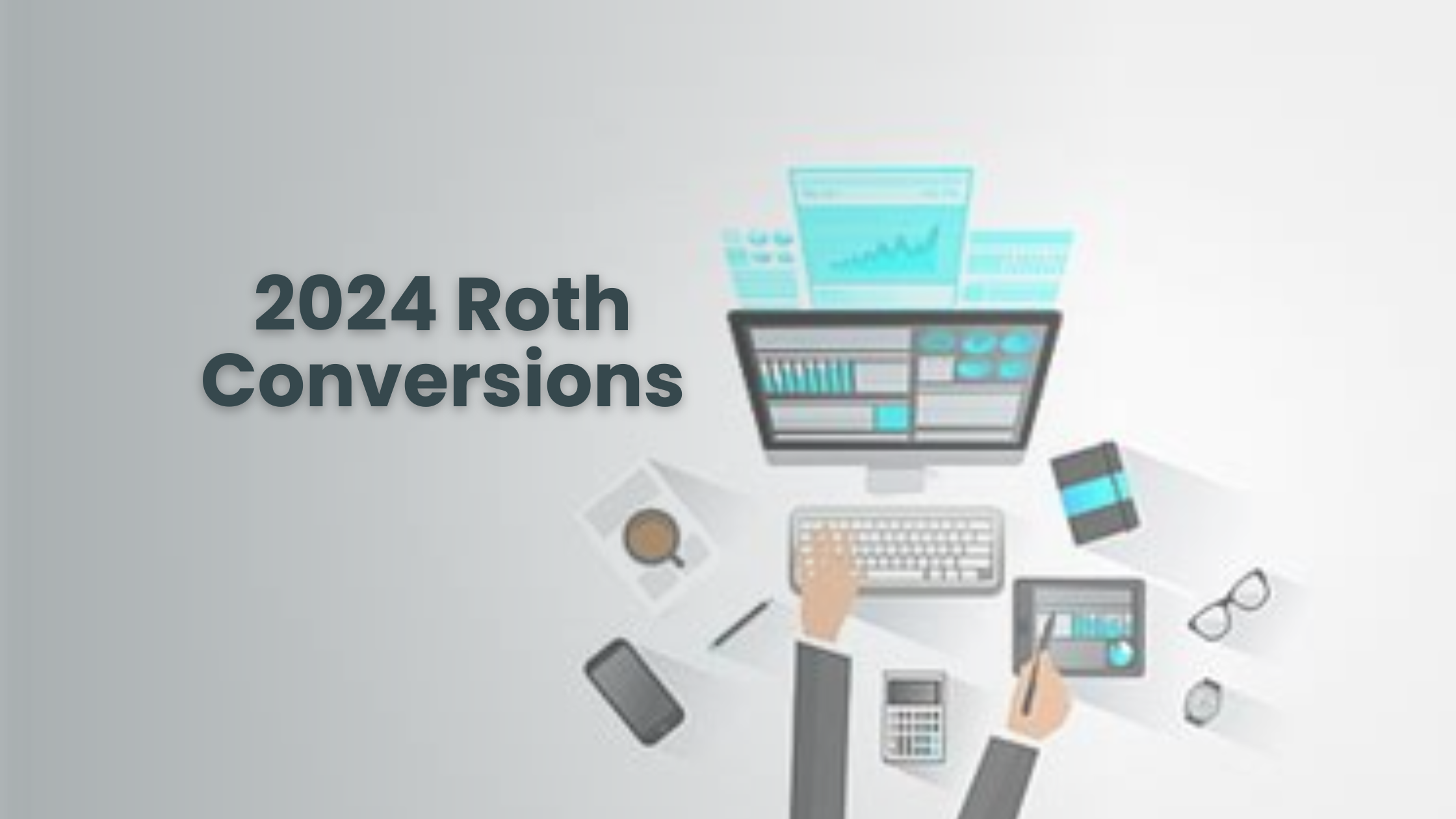Should you perform a Roth conversion for the 2024 tax year? Learn how to convert to a Roth IRA and maximize tax-free withdrawals in retirement. For more comprehensive insights, read our Roth Conversion Guide for 2024 Tax Year: Conversion Rules for Roth IRA.
Understanding Roth IRA Conversion Rules for 2024 Tax Year
Roth IRA conversions can be a strategic tool for optimizing long-term savings. This article reviews the mechanics of converting a traditional IRA to a Roth IRA, the rules governing conversions, the tax implications involved, and why this tax year (2024) might be an optimal time to consider performing one.
What is a Roth IRA Conversion?
Converting a traditional IRA to a Roth IRA involves transferring funds from a traditional retirement account into a Roth account. This process, known as a Roth IRA conversion, requires paying taxes on the conversion amount, as traditional IRAs are funded with pre-tax dollars. The conversion amount is added to your taxable income, impacting your federal income tax for that year.
Recently, Roth conversions have become an important topic of conversation with our clients. There are several reasons for this:
- Cheaper cost on the conversion when investments are down (fewer taxes owed)
- Anticipation of taxes going up
- RMDs pushing you into a higher tax bracket
- Tax-free growth
Benefits of Converting Traditional IRA to Roth
The primary benefit of a Roth IRA conversion is the potential for tax-free growth and withdrawals in retirement. Unlike traditional IRAs, Roth IRAs do not require minimum distributions, allowing your retirement savings to grow tax-free for a longer period. Additionally, converting to a Roth IRA can be advantageous if you anticipate being in a higher tax bracket in the future, as you pay taxes at your current tax rate during the conversion. This strategy can be particularly beneficial for those who expect their income tax rates to increase over time.
Watch Out for Penalties when Converting to a Roth IRA
While there are no direct penalties for converting a traditional IRA to a Roth IRA, the conversion involves paying taxes on the converted amount. If you are under age 59 and 1/2 and use funds from the IRA to pay the conversion taxes, you may incur a 10% early withdrawal penalty. Therefore, it’s advisable to use external funds to cover the tax liability to avoid this penalty and maximize the benefits of the conversion.
Other Tax Considerations to Keep in Mind
Your current tax rate plays a significant role in the decision to convert a traditional IRA to a Roth IRA. If you are in a lower tax bracket, converting may be more advantageous, as you will pay less in taxes on the conversion amount. Conversely, if you are in a higher tax bracket, the tax burden may outweigh the benefits unless you anticipate a substantial increase in your future tax rate. Converting to a Roth IRA while in a higher tax bracket may seem counterintuitive, but it can be a strategic move if you expect your tax rate to increase further in the future because tax rates may soon rise. If you pay the tax at your current rate, you can potentially avoid higher taxes on withdrawals during retirement. However, it’s essential to evaluate your current financial situation and consult with a tax advisor to determine if this strategy aligns with your long-term retirement plan.
Need help with your financial plan? Meet with Us
Why 2024 Might Be a Good Time for a Roth IRA Conversion
Future tax rates are a critical consideration in Roth IRA conversion decisions. If you expect tax rates to rise due to changes in tax laws or personal income growth, converting now could lock in a lower tax rate on your retirement savings. This foresight can lead to significant tax savings over the long term, enhancing the overall value of your retirement account. It’s important to weigh these potential benefits against the immediate tax impact of the conversion.
Knowledge is Confidence!
Tax Rates Set to Increase Starting in 2026
Most of our clients believe they will be in a lower tax bracket in retirement, however, it comes as a surprise when we explain they will most likely be in the same tax bracket or even higher (due to RMDs). The current tax laws will sunset in 2025, and projections show that taxes will most likely increase. Historically, the current tax laws are the lowest they have ever been. If you believe taxes will be higher in the future, it could make sense to pay the taxes now at a lower bracket through a Roth conversion. The table below illustrates the stark differences in the current tax laws and the tax laws in 1986. If you filed a joint tax return and made over $64,750 ($193,000 in today’s dollars), then you would be in the 42% tax bracket! That is an 18% increase from today’s tax rate.

*$64,750 inflation-adjusted to present value (3% inflation rate) is equivalent to $193,000 in today’s dollars
Roth IRA Conversion Rules
Key Rules when Converting Traditional IRA Funds to a Roth IRA
The Roth IRA conversion rules stipulate that you must pay taxes on the conversion amount, as traditional IRAs are funded with pre-tax dollars. There are no income limits for conversions, meaning anyone can convert regardless of their income level. However, when you execute the conversion, the dollar amount is treated as taxable income in the year of the conversion. So, a Roth conversion could affect your overall tax liability, potentially moving you into a higher tax bracket. It’s crucial to calculate the impact on your federal income tax and plan accordingly to manage the tax burden effectively. Utilizing a Roth conversion calculator can help estimate the tax implications and guide your decision-making process.
What is a Backdoor Roth IRA Strategy?
The backdoor Roth strategy is a method for high-income earners who can’t contribute to a Roth IRA directly due to income limits. This strategy involves making non-deductible contributions to a traditional IRA and then converting those funds to a Roth IRA. While this approach can be beneficial, it requires careful planning to avoid unintended tax consequences. The pro-rata rule, which requires you to pay taxes on the proportion of pre-tax contributions in your traditional IRA, can complicate this strategy. Consulting with a tax advisor is recommended to help navigate these complexities.
Reach Out to Us!
If you have additional federal benefit questions, contact our team of Chartered Federal Employee Benefits Consultants (ChFEBC℠), CERTIFIED FINANCIAL PLANNER™ (CFP®), and Accredited Investment Fiduciary (AIF®). At PlanWell, we are federal employee financial advisors with a focus on retirement planning. Learn more about our process designed for the career fed.
Preparing for federal retirement? Check out our scheduled federal retirement workshops. Sign up for our no-cost federal retirement webinars through our online schedule. Make sure to plan ahead and reserve your seat for our FERS webinar, held every three weeks. Want to have PlanWell host a federal retirement seminar for your agency? Reach out, and we’ll collaborate with HR to arrange an on-site FERS seminar.
Want to fast-track your federal retirement plan? Skip the FERS webinar and start a one-on-one conversation with a ChFEBC today. You can schedule a one-on-one meeting with us.









